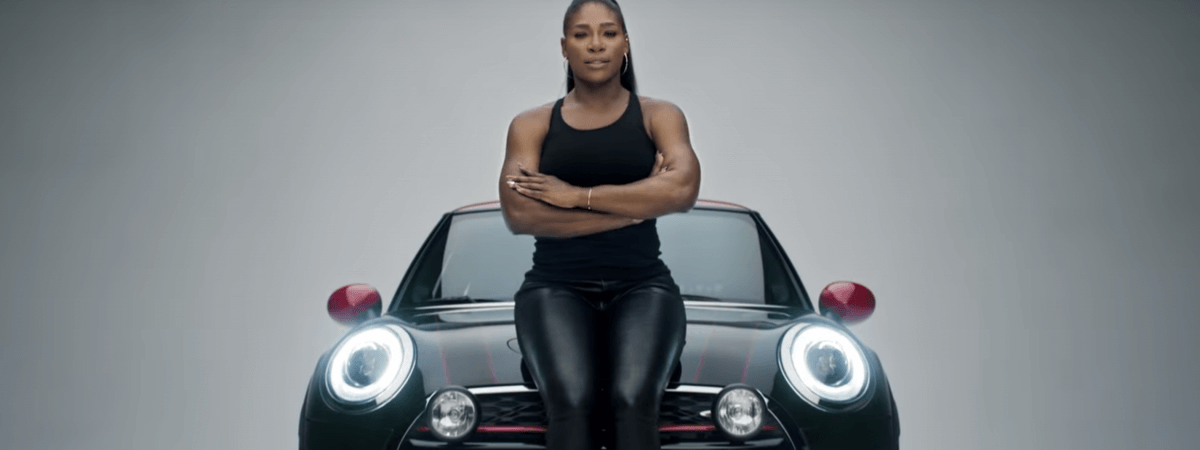
Automotive News
Before Mini defied labels in its star-filled Super Bowl ad, the brand’s agency had a long list of famous faces it wanted for the spot.
Some, such as tennis great Serena Williams, agreed to do the Clubman commercial fairly quickly. Others dropped from the list because of scheduling conflicts — or because they simply didn’t have an affinity for the brand, said John Butler, chief creative officer of Butler, Shine, Stern & Partners.
The agency was picky because it wanted celebrities in the spot to have owned Minis before or been involved with the brand. In an ad that was so keyed on the car, Butler said, authenticity was paramount.
“The idea is all about the vehicle and they’re talking about the vehicle itself,” Butler said.
He added: “If we were trying to create another narrative and the car was just incidental and just there, that would’ve been a concern.”
The agency’s quest underscores a key principle of Super Bowl ad success: A buzzworthy celebrity appearance is often the price of admission for advertising on gameday, but not any celebrity will do.
Marketing experts say brands must ensure that the famous faces they enlist are properly integrated into their narratives and have a sensible connection to them. If not, says Mike Bernacchi, a marketing professor at the University of Detroit Mercy, audiences may remember the stars, but not the product being pitched.
That’s the worst possible outcome for brands that are dropping around $5 million for 30-second Super Bowl spots this year, in addition to the hefty celebrity payouts and production costs.
“If you get lost in the celebrity sweepstakes, you’re screwed, you’re finished,” Bernacchi said.
‘The right match’
This year’s star-laden lineup of Super Bowl ads only raised the stakes, Bernacchi said.
Mini used five celebrities besides Williams, including skateboard legend Tony Hawk and Hall of Fame pitcher Randy Johnson. Buick featured New York Giants wide receiver Odell Beckham Jr. along with actress/model Emily Ratajkowski.
Kia turned to actor Christopher Walken, while Hyundai went with actor Ryan Reynolds and comedian Kevin Hart.
Even such A-listers can bomb. If viewers think a celebrity doesn’t make sense representing a company, they’re going to be turned off regardless of how well known the brand or star is, said Henry Schafer, executive vice president of Q Scores, which helps brands find celebrity matches for campaigns.
“If it’s the right match, it can’t hurt,” Schafer said. “The creative execution is key.”
Kia’s “The Perfect Getaway” spot from 2015 starring Pierce Brosnan, who formerly played James Bond, was a strong example of celebrity integration, said Skip Streets, vice president of strategy and business development at Ace Metrix, which measures the impact of video advertising. The ad played on Brosnan’s action movie credentials while touting the 2016 Sorento as a practical, snow-worthy crossover.
Chrysler’s gritty “Halftime in America” spot with Clint Eastwood in 2012 was also well executed, he said.
“He’s a true-blue, middle-American man,” Streets said. “He was coming across when Chrysler needed to be a part of America. That worked.”
Research shows that Super Bowl auto ads aren’t hampered by celebrity appearances like advertisers in other industries are.
According to Ace Metrix, automotive spots featuring celebrities since 2010 have outperformed non-celeb ads with an Ace Score of 583. That’s 22 points better than auto ads without any notable figures.
The company’s Ace Score weighs factors such as likability, relevance and “re-watchability.”
But for most brands, the payoff comes not on game day but for weeks and months before and afterward.
Online payoff
While some stars come with a hefty price tag (Hart was the second-highest-paid comedian last year, according to a Forbes ranking) or a polarizing effect on viewers (Beckham was suspended for an altercation in a late-season game), data show the celebrity gambit is worth the risk when it comes to maximizing viewership online.
After all, Hart, Hawk, Beckham and Ratajkowski aren’t just stars — they’re marketing gold as search terms on Google and YouTube, with videos that millions of Internet users seek out.
Since 2012, auto brands using celebrities in their Super Bowl campaigns drew three times as many online viewers on average as those that didn’t, according to Visible Measures, which tracks the viewership of online campaigns.
Some of the most impactful auto ads in recent Super Bowls have done well without celebrities, including Volkswagen’s “The Force” and Chevrolet’s “Blackout.” But using a celebrity gives viewers a reason to pay attention and leads to more sharing online, said Seraj Bharwani, chief analytics officer of Visible Measures.
Nowadays, Bharwani said, brands can take full advantage of their famous endorsers with online content that isn’t confined to the time constraints of Super Bowl ads.
To complement its spot, Mini produced a series of candid interviews featuring its celebrity cast that began rolling out online on Jan. 18. The interviews anchored the “Defy Labels” campaign page that also housed a Clubman photo gallery, configurator and other vehicle details.
Mini “aligned the branding of these characters with the car” in their interviews, Bharwani said. “In every case, they tie it back to Mini, which is very powerful.”
View this article on Automotive News